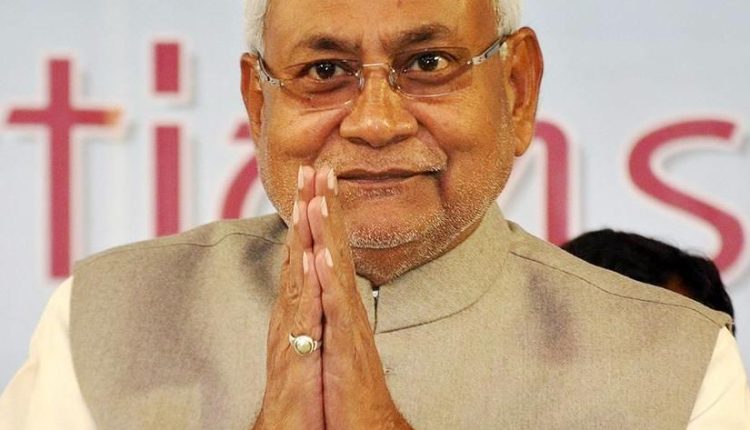Patna: After resigning as Chief Minister of Bihar, Nitish Kumar along with leaders of Janata Dal (United), Bharatiya Janata Party (BJP), Hindustani Awam Morcha (HAM) and an Independent MLA met Governor Rajendra Arlekar and staked their claim to form the NDA government in the state.
This comes exactly a year after Kumar had said, “I would rather die than go to NDA”. However, 18 months after ruling as the Mahagatbandhan leader, Kumar broke ties with Rashtriya Janata Dal (RJD) and Congress, saying “Gathbandhan main bhi gadbad chal rahan hai (something is wrong in the alliance). People are not happy.”
As the mandapan at the Raj Bhavan in Bihar’s Patna is getting ready for the ninth oath-taking ceremony of Nitish Kumar as CM, let’s look at his political career spanning four decades and how he frequently flip-flopped between BJP and RJD.
Nitish Kumar won his first Assembly elections in 1985 from Harnaut in Nalanda on a Janata Dal ticket. In 1989, he was elected to the Lok Sabha from Barh and was re-elected from the same constituency in the mid-term elections in 1991. He came to the limelight of Bihar politics in March of 1990 when he helped the then senior in JD, Lalu Prasad, whom he called “bade bhaiya” become the CM. But in 1994, he went against Lalu Yadav’s control of Janata Dal in Bihar and joined hands with socialist leader George Fernandes to form the Samata Party. In 2003, the Samata Party merged with the Sharad Yadav-led Janata Dal (United) JD(U) which had an alliance with BJP since 1998.
2000: Nitish Kumar was sworn in as the CM for the first time in March 2000 with support from Vajpayee-led NDA at the centre. He resigned within seven days.
2005–2010: In 2005, the NDA emerged victorious in the Bihar Assembly elections and Kumar was sworn in as the CM of Bihar. He remained as the CM till the next Assembly elections in 2010.
2010–2014: He came back to power in 2010 and formed government in alliance with BJP. Kumar ended the 17-year-old JD (U)-BJP alliance in 2013 expressing his displeasure with Narendra Modi’s appointment as the Chairman of BJP’s Lok Sabha election campaign committee. He resigned soon after the Lok Sabha elections in May 2014 when JD (U) did not fare well.
2015: In 2015, JD(U) in Bihar under Kumar’s leadership joined hands with the RJD and the Congress. Kumar took oath the fourth time as the Chief Minister in February 2015.
2015 – 2017: The JD (U)-RJD-Congress alliance swept the polls with a huge majority, winning 178 out of 243 seats and Nitish Kumar was sworn in as Chief Minister in November 2015 for the fifth time. RJD’s Tejashwi Yadav became the Deputy Chief Minister of Bihar. But only two years later friction appeared within the alliance. JD(U) supported the BJP government’s demonetisation in 2016 and BJP’s presidential candidate Ram Nath Kovind which was opposed by RJD and Congress. On the other hand, there were corruption charges against Deputy Chief Minister Tejashwi Yadav and he refused to step down. On July 26, 2017, Nitish Kumar resigned from the CM’s post and formed alliance with the BJP. He took oath took as the CM of Bihar for the sixth time.
2017 – 2020: Kumar remained the CM of Bihar from 2017-20 for the sixth time as a member of the NDA alliance.
2020-2022: Kumar came back to power in 2020 Assembly elections as part of NDA and was sworn in for the seventh time.
2022-2024: On August 9, Kumar broke ties with the NDA and resigned from the CM’s post to rejoin the Mahagathbandhan with RJD and Congress. Following which, he was sworn in as the CM for the eighth time.



Comments are closed.